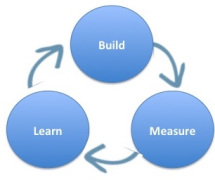Lean Startup Practices to Ensure Success

Lean Startup Practices to Ensure Success – BHIVE Workspace | According to a Forbes Study, 9 out of every 10 startups fail worldwide- the bitter truth about the startup ecosystem. Wouldn’t it be nice if one could ensure the success of each and every startup?
What if I tell you that the success of every startup can be ensured? It can become a reality as dreamy and untrue as it may sound.
As Eric Ries puts it – “Startups can indeed be engineered to succeed by following the scientific lean practices, which means those practices can be learned, which means they can also be taught.“

Below is the list of some must-follow lean startup practices (from the book “The Lean Startup : How Today’s Entrepreneurs Use Continuous Innovation to Create Radically Successful Businesses” by Eric Ries):
- “The lean startup method is not about cost, it’s about speed” Lean startups waste less money by using the scientific approach of testing new ideas. Here you test frequently to learn quickly. Lean startups take advantage of the MVP feedback to quickly learn what is not working so they can make changes immediately. So wasting less money is like a by-product in a mission toward learning quickly.
- Build-Measure-Learn: We must capture what customers really want not what they think they want. Market research and surveys only capture what customers think they want. Since customers have a hard time assessing their feelings objectively, so these do not give a very accurate gauge. Experimentation on the other hand, observes real customer behavior. And an MVP is that version of the product that enables a full-turn of this build-measure-learn loop with minimum effort and development time.

- Validated Learning: It is about testing whether the idea will fly and finding out if people will buy what is being built. If is about validating if the startup is on the right path or if it needs to change course.
- Innovation accounting helps to empirically measure the true progress of innovation. Metrics that don’t convert are of no use. For example, 1 million page impressions with zero conversion are no good. Impressions like web hits or number of downloads are vanity metric which give a false impression of success. Actionable metrics on the other hand, are stats that tie to the goals of the business.
- The Andon Cord: Since quality cannot be traded for time, Andon cord brings work to stop as soon as an uncorrectable quality problem is detected, which forces investigation. Checklists to ensure the basic workings of any process so that any error is caught quickly and automatically and no further work is done until these basic checks are addressed, can be thought of as a reasonable equivalent of andon cords in the context of lean startups.
- The 5 Whys: Repeatedly asking the question “Why?” help to peel away the layers of symptoms and identify the root cause of the problem. Most problems discovered tend to look like a technical issue, or individual person’s mistake on the surface but actually stem from lack of appropriate training.

- Small Batches:The biggest advantage of working in small batches is that quality problems can be identified much sooner. Working on quick changeover in general purpose machines is more efficient than working on economies of scale in mass production machines. Focusing on one-piece-flow instead of batch & queue (mass production) helps to reduce lead time, improve on-time delivery & reduce inventory.
- Pivot: Startups need to adapt their strategies to what is working with the customers in the market. A pivot is a change in one of the fundamental hypothesis that one started out with. Following are few common pivots:
- Zoom In Pivot – A single feature in the product will now become the entire product
- Zoom Out Pivot – Product expands from a single feature to multiple features. Eg. Paytm is expanding from mobile recharge to mobile wallet to e-commerce and Ola from cars to bikes
- Customer Segment Pivot– Changing to a different customer, product remains the same
- Customer Need Pivot – a more important problem needs to be solved for the customer than the original
- Business Architecture Pivot–switching from high margin, low volume, to low margin, high volume
- Channel Pivot-The internet has created many more channel options for startups. Eg. Myntra pivoted channel by going mobile app only from website.
- Technology Pivot-A new technology can offer substantial benefits in cost, efficiency, or performance.
A lot of startups in Silicon Valley and elsewhere have hugely benefited from Eric Ries’ Lean Startup practices. These practices if followed wisely have the potential to become the Success Mantra for your startup.
Please make sure to click the like button if you liked this article. Also, if you would like to share your views or thoughts on Startups etc, please feel free to comment in the box below.






